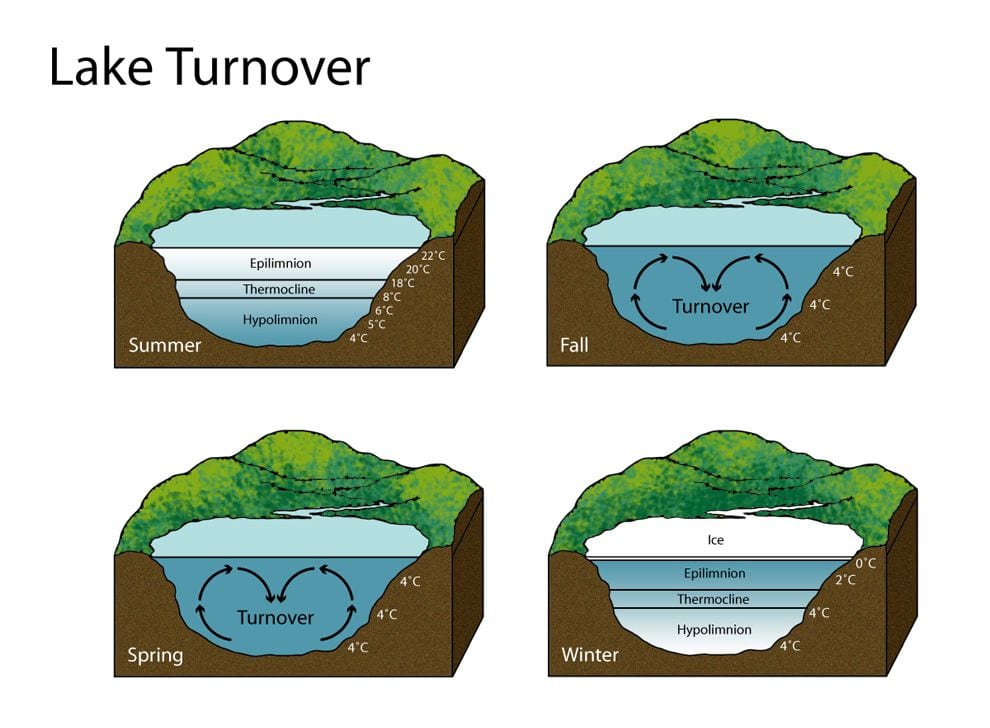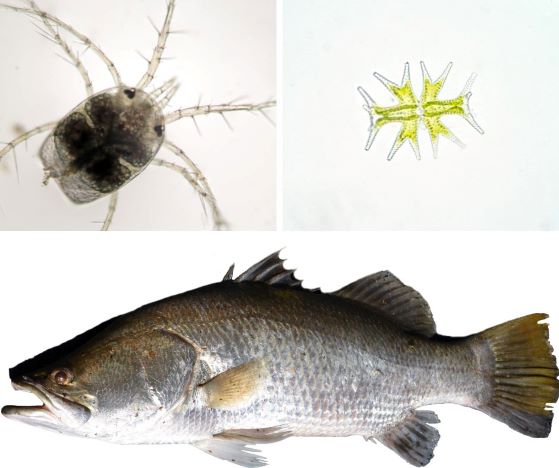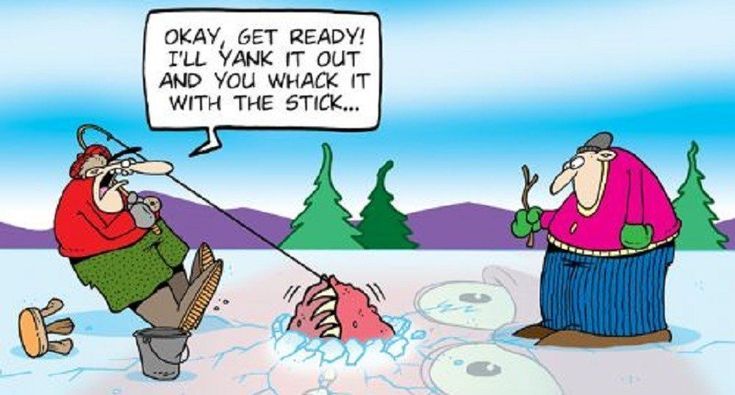This has certainly not been a good year for winter enthusiasts or people who need snow and ice to make a living. The lake was only iced over for a short time, and with the recent warm temperatures, is already gone.
Our Lakes Are Getting Warmer
We can see it with our own eyes, but there is also much research going on demonstrating that our northern glacial lakes are getting warmer, experiencing less ice cover and less ice duration.

Several articles state that decreases in winter ice cover and increases in lake surface temperature have led to changes in lake mixing regimes and have resulted in less frequent lake mixing. You can read about lake mixing/turnover and why it is important here and here.
Diminished ice cover can have profound effects on the ecology of the lakes. Certain fish species, for example, need ice cover to protect their spawning beds from winter storms. A season with no ice cover could wipe out a whole season of fish.
Milder Winters May Impact Growth and Survival of Yellow Perch in Northern Michigan Lakes
The findings of this study suggest that warmer winters negatively impact first year growth in Yellow Perch. As climate change continues to increase overall temperatures and produce more mild winters, this proves problematic for the future health of Yellow Perch populations.
Substantial Increase in Minimum Lake Surface Temperatures Under Climate Change

Winter temperature is of great importance to lake ecosystems, and the annual minimum temperature sets a strong control on many processes occurring in lakes. Everything from fish and plants to microscopic bacteria is affected.
For example, warmer winter temperatures can influence the length of the growing season which can result in:
- increases in bacterial and phytoplankton productivity
- an abundance of lake vegetation
- a decrease or even the loss of cold stenothermal species
- disruption in food web structures leading to a possible mismatch of species interactions
stenothermal
steno·ther·mal ˌste-nə-ˈthər-məl
: capable of surviving over only a narrow range of temperatures
When you are enjoying the lake this summer and notice something out of the ordinary, you may be able to trace the cause back to the lack of ice and snow cover from this winter.
We are still learning and discovering more about the way lakes work. Our understanding of the natural world evolves and changes as more of it is studied. New research and data help us better understand and preserve our lake. To me, that is exciting, interesting and fun!
If Winter comes, can spring be far behind?
P.B.Shelley ‘Ode to the West Wind’

Hi, I’m Debbie Palmer. I received a BS in Horticulture from Purdue University. Here at LMEF, I am responsible for outreach presentations, monitoring the lake and it’s wetlands, project manager for restoration and research projects, and act as a community resource for all things related to the well-being of Lake Maxinkuckee and its surrounding watershed. I completed Indiana Watershed Leadership Academy, volunteer with the Indiana Clean Lakes Program, Hoosier River Watch and Marshall County Lakes and Waters and serve as a Board Member for Indiana Lakes Management Society.


Recent Comments